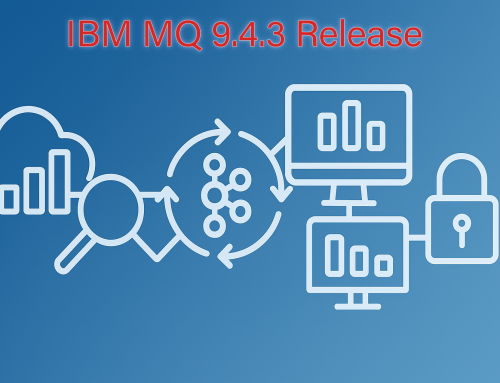Just as a fitness monitor checks a runner’s heartbeat and pace during a run, health monitoring software allows a business to know when an application isn’t performing optimally. Monitoring software is nothing new, but most software on the market approaches systematic bottlenecks from a technical standpoint, rather than putting the power in the hands of the business in a secure and meaningful way.
“We built Infrared360 differently than all other vendor products that did this before.”
“We built Infrared360® differently than all other vendor products that did this before,” says Peter D’Agosta, Infrared360 product manager at Avada Software. “We came about it from a business unit point of view, where everybody else did it from a topological point of view. When you’re in a business unit of a company and you want to effectively manage things you are responsible for, you don’t necessarily want to ask a central group to manage it for you. If you want to see just the servers and applications and middleware that are important to your applications, then that’s all you should see.”
Infrared360® —a web management portal for general health and performance monitoring, testing, auditing, reporting and administration—is designed specifically to work with application middleware, including the IBM WebSphere stack. If the software detects a problem, like an application breaking down or the messaging object malfunctioning, administrators can review, identify, and work in collaboration with others in the business unit to resolve the issue through an administration portal.
Rather than sort through hundreds or thousands of servers, Infrared360® allows users to set up trusted spaces that act as delegated management and administration areas, known as secure sandboxes. These virtual, compartmentalized units allow team members to work on one project at a time, focusing on just their task at hand, without any risk to other applications.
“Say you’re using an application [for] insurance claims,” he explains. “I could say I want you to come in and work on a problem I’m having with the claims application. With previous solutions, you could go in and work on the claims application, as well as any other application in the system, which is dangerous. Even though I’ve got your help on the claims application, I do that at the risk you might delete something that’s important. And for that reason, it makes it difficult to solicit your help.”
Some companies have as many as 90 different business units with only one administrator handling a backlog of changes, in an effort to avoid the risk posed by business users having unfettered access to applications on the servers. This can slow the entire process, reports D’Agosta.
“Typically a central administrative person is asked to do all those things for them,” he explains. “I used to do that job personally at a bank. What happens is these different business units are constantly asking you, ‘Can you change this? Can you update that?’ You start this, stop that, change this value, and all this stuff goes back to the central administrator. They become a bottleneck, creating a backlog.”
Every other product on the market, according to D’Agosta, gives a user full authority to access any part of the server, but not Infrared360. Instead, users can bookmark some things for immediate access and block access to others. It segments systems for business use into a more focused environment, controlling and minimizing risk while allowing for collaboration on a project, problem, or task.
“It’s a double-edged sword,” D’Agosta says. “Security is an issue when you want to collaborate, because the minute you have to share things, you have security issues. We create these little sandboxes so people can work on collaborative projects and problems. An Infrared360® admin can quickly create a business unit sandbox so team members in that sandbox won’t have the permission to make changes or deletes; so the admin’s not really worried about team members doing something they’re not supposed to do.”
This is important for any company where security is a concern. For example, Infrared360® is used by airlines that must follow Transportation Security Administration (TSA) regulations while fixing server problems.
“If I wanted my group to fix a problem with a ticketing application… normally you’d log into that server and fix that application,” he says. “But there’s a problem with that. If I log onto that server, I not only see the ticketing application, I might see the cargo application [and] the crew manifest and that’s really not a good thing, since TSA rules actually frown on it. In our system, I would create a business unit called ticketing. Now people collaborating in that business unit sandbox can’t see cargo, can’t see crew. It allows you to collaborate with people without opening up the can of worms.”
Along with the advantage of the secure sandboxes, Infrared360® also doesn’t require any additional installations to function. In fact, Infrared360® takes only minutes to completely install and a few hours to fully configure, compared to other products which can take hours to install and weeks to even partly configure.
“The nice thing about our product is you don’t install anything on the endpoints you’re managing,” reports D’Agosta. “There’s no installation of any kind at the managed endpoints. It’s also platform independent. So [one customer] had Tandems and AIX and Windows—an odd combination of platforms—but for users of our system, [OS knowledge for that platforms is] invisible. Those end users they collaborate and work on that application on all these different platforms, but it’s a seamless picture to them. No specific OS skills are needed. This is a huge productivity gain.”
He continues, “It’s built on web services architecture and there are hardly any moving pieces. You install this as a WebSphere application. Basically, you just plug it into WebSphere Application Server and that’s it. It takes about five minutes.”
New release expands support stack and offers new interface
Version 4 of the product has been out for two years and the company is releasing Version 5 in January 2013. This newest version, code-named Viper, has a number of significant new features, including a completely rebuilt and more dynamic user interface. Viper is also improved to integrate with a bigger stack of IBM products, with upgraded support for IBM WebSphere Application Server (WAS) v7 and v8, IBM WebSphere Message Broker v7 and v8, and IBM WebSphere MQ v7.1 and v7.5, as well as endpoint devices such as IBM WebSphere DataPower.
The new version also touts a slew of enhancements to the front-end of the product, allowing for greater ease of use, particularly for business users.
“We used Web 2.0 remodeling to do the entire front end,” D’Agosta says. “Before, [when] you managed MQ environments and then had to go manage [WAS], you clicked a couple of menus to get there. Now the whole system is like a big bread crumb trail, so you click on the trail and then you’re back in MQ at the same spot you had previously been. It’s all browser-based, so there’s no desktop software to install anywhere; it’s a true private cloud application. Our customer base definitely helped us with all the improvements; they showed us some of the realities of setting up and using the product. Eighty percent of Viper’s new features came from customer feedback.”
The new Infrared360® now handles perimeter devices like IBM WebSphere DataPower, so that if the perimeter device fails, the administrator is aware of it. D’Agosta explains that this is important because even if the entire stack is up and running, if the perimeter device fails, nothing is getting to the middleware.
“There are technologies that are tangent to middleware that could affect it,” he says. “It’s analogous to an on-ramp on the highway. If you’re on a highway and you’re standing there and you can’t see any traffic, most people would say the highway is great. That depends. It’s great unless the on-ramp to the turnpike is shut down, in which case it’s not a good thing there’s no traffic.”
Also, issues on different middleware and perimeter device technologies can be correlated using simple rules to identify, isolate and take action on problems occurring across the stack. For example, if a message queue is backed up and a message flow is stopped and a WAS process is hung up, it is likely that the stopped message flow caused issues on the IBM WebSphere MQ and WAS systems. Without correlating events across those three tiers of the stack, it would take much longer for a support person with access to just the IBM WebSphere MQ tier take to figure out the problem, D’Agosta says.
Avada grows with the technology of the future
Here are the top five interface enhancements to the latest release of Infrared360®:
- Expanded capabilities to allow use with newest versions of IBM WebSphere products.
- Problem detection in perimeter devices outside WAS for faster health diagnoses.
- The ability to manage thousands of endpoints from a single server efficiently.
- A Web 2.0 interface, which is more user-friendly and less complex than previous versions.
- Activation of web services monitoring for any service that you can reach through your corporate network.
The software is able to manage thousands of endpoints so that administrators get much more accomplished in less time. Using Version 4, one of Avada’s larger customers has seen a 40 percent overall efficiency increase with Infrared360®, according to D’Agosta. And based on early beta customer feedback on Viper, it is expected to provide at least an additional 30 percent efficiency improvement.
“[There are] 20 percent less resources needed to do the work and 50 percent more work gets done with the people they have.”
“[There are] 20 percent less resources needed to do the work and 50 percent more work gets done with the people they have,” reports D’Agosta.
The software pricing model is based on the cost of a central server license and the number of managed endpoints. If a company wants to add additional managed endpoints, they simply purchase a key for that expansion; no installation of software needed anywhere.
Infrared360 currently has about 40 customers—mainly large, Global 2000 companies in the financial and transportation markets—but no matter the size or industry of the company, if it’s using IBM middleware, Infrared360 has something to offer, D’Agosta says.
“For ease of use and ease of upgrade, there’s nothing close to our product,” he says. “It’s a general health monitor for middleware—specifically IBM middleware—so anything from application server frontend to messaging backbone to whatever applications on the back side of that. The technical people will like that. The business people will like the secure collaboration environment that is completely unique to our product.”
To learn more about Infrared360®, visit www.avadasoftware.com or read the detailed whitepaper, “Collaborating with Strategic Business Units in Support of Enterprise Applications.”



















